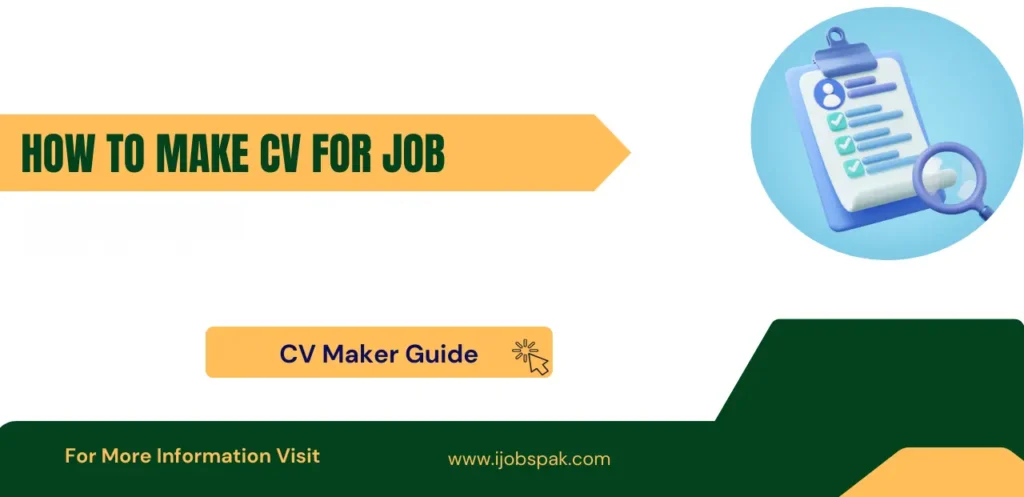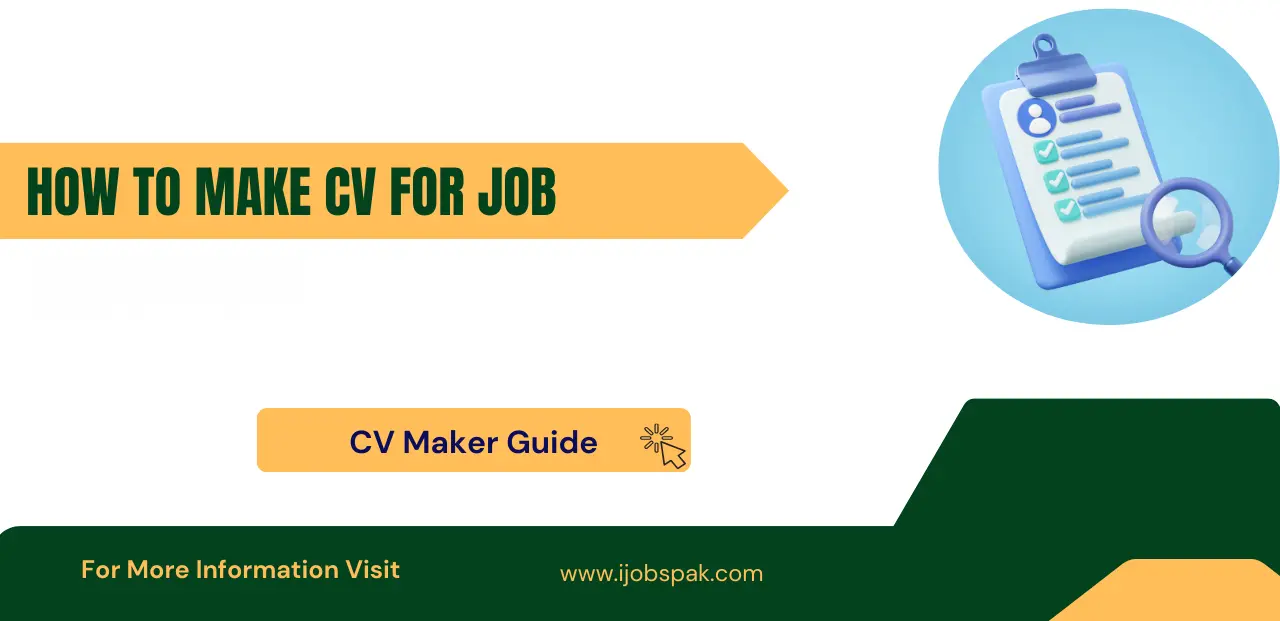Creating a CV is one of the most crucial steps when applying for a job. A well-crafted CV helps you make a lasting impression, showcasing your qualifications and experience. It serves as your first opportunity to stand out and show potential employers why you’re the ideal candidate. This guide will walk you through the key sections of a CV and provide helpful tips for creating a compelling one that gets noticed.How To Make CV For Job
What is a CV?
A Curriculum Vitae (CV) is a comprehensive document that details your professional journey, including your skills, education, and work history. Unlike a resume, which is more concise, a CV offers an in-depth overview of your background. It is primarily used for job applications, giving employers insight into your abilities and why you would be a great fit for the role.
- Contact Information
- Your CV should start with your contact details. Include your full name, phone number, email address, and links to professional profiles, such as your LinkedIn.
- Professional Summary
- This section is a brief paragraph that introduces you and outlines your key strengths and experience. It provides employers with a snapshot of your professional background, career goals, and why you’re a strong candidate for the position.
- Work Experience
- List your previous roles, starting with your most recent job. For each position, include the company name, job title, dates of employment, and a summary of your responsibilities. Emphasize your accomplishments and use action-oriented language to highlight how you contributed to the company’s success.
- Education
- In the education section, start with your highest degree or qualification. Include the name of the institution, the dates you attended, and the qualifications you earned. If applicable, mention any notable academic achievements such as honors or awards.
- Skills
- List both hard and soft skills relevant to the job. Hard skills are technical abilities like coding or data analysis, while soft skills refer to personal traits such as communication or teamwork. Tailor this section to include skills that align with the job you’re applying for.
- Certifications and Achievements
- If you’ve earned certifications or awards that relate to the job, include them in this section. These accomplishments can set you apart from other candidates by demonstrating specialized knowledge or unique expertise.

How to Tailor Your CV for a Specific Job
When applying for a job, it’s essential to customize your CV to match the specific role you’re interested in. Begin by carefully reviewing the job description and highlighting the skills, qualifications, and experience the employer seeks. Incorporate these elements into your CV to demonstrate that you’re a great fit for the position. Additionally, use relevant keywords from the job posting. Many companies utilize software to screen CVs, and using the right keywords can help ensure that your CV reaches the hiring manager. Focus on aligning your previous roles and expertise with the job’s requirements.
Tips for Designing a Professional CV
- Layout and Design
- The layout of your CV plays a significant role in how it is perceived. Make sure it’s neat, well-organized, and easy to read. Use clear section headings and maintain plenty of white space to avoid a cluttered appearance. The goal is to make your CV easily scannable for employers.
- Fonts and Font Sizes
- Choose simple and professional fonts, such as Arial or Times New Roman. The body text should be sized between 10 and 12 points, while headings can be slightly larger. This ensures readability while maintaining a professional look.
- Bullet Points vs. Paragraphs
- It’s better to use bullet points rather than long paragraphs to highlight your accomplishments and job duties. Bullet points make it easier for employers to quickly locate the information they need, improving the overall readability of your CV.
- Avoid Common Mistakes
- There are several common errors to watch out for when creating your CV. These include typos, irrelevant personal information, and poorly structured formatting. Always proofread your CV before submission to ensure it’s free of mistakes.
CV Examples for Various Job Types
Your CV will look different depending on the type of job you are applying for. Here are some tips for different types of CVs:
- Entry-Level CV: Focus on your education, skills, and any internships or volunteer experience.
- Management CV: Highlight your leadership abilities, achievements, and team management experience.
- Freelance CV: Showcase your portfolio, key projects, and the specific skills that make you a successful freelancer.
Conclusion
Crafting a CV may seem daunting, but it’s an essential part of the job application process. By following the steps in this guide, you can create a CV that effectively showcases your qualifications and experience. Remember to customize your CV for each job you apply for and ensure that it’s easy to read and free of errors. A strong CV will increase your chances of landing your desired job.
FAQs
What should a CV include?
A CV should contain your personal information, a professional summary, work experience, education, skills, and any relevant certifications or awards.
How long should a CV be?
A CV should generally be one to two pages long, depending on your experience. Keep it concise and focused on the most important details.
Can I create a CV without work experience?
Yes, if you lack work experience, you can focus on your education, skills, and any volunteer work or internships you’ve completed.
How do I make my CV stand out?
To make your CV stand out, tailor it to the specific job you’re applying for. Highlight the most relevant skills and experience, and ensure the format is clean, with clear headings and easy-to-read sections
